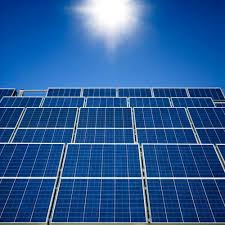Introduction:
In an era marked by a growing emphasis on sustainability and environmental responsibility, the intersection of finance and eco-friendly initiatives has become increasingly crucial. One prominent example is the adoption of solar panels, a renewable energy solution that not only reduces reliance on traditional power sources but also offers potential economic benefits. This exploration delves into the realm of “Eco-Friendly Finance: Evaluating the Total Cost of Solar Panels,” shedding light on the multifaceted considerations that go beyond the initial investment. Beyond the ecological advantages, we will unravel the financial intricacies, incentives, and long-term implications associated with the integration of solar technology. As we navigate this landscape, it becomes evident that the true value of solar panels extends far beyond their immediate costs, encompassing a spectrum of factors that contribute to a sustainable and economically viable future.
Eco-Friendly Finance: Evaluating the Total Cost of Solar Panels
When evaluating the total cost of solar panels, it’s essential to consider various factors beyond the initial purchase price. Eco-friendly finance involves assessing both economic and environmental aspects to make informed decisions.
1. Upfront Costs:
Solar Panel Cost:
- Type and Efficiency: High-efficiency solar panels may have a higher upfront cost but can generate more electricity in the long run, potentially leading to higher savings.
- Brand Reputation: Consider reputable brands with proven track records for quality and reliability.
Installation Costs:
- Labor: Skilled labor is crucial for a proper installation. Obtain quotes from different installers and consider their experience and customer reviews.
- Permits: Research local regulations and permitting requirements, as these can vary and may impact installation costs.
2. Financial Incentives:
Government Incentives:
- Federal Tax Credits: The Federal Investment Tax Credit (ITC) can provide a significant reduction in the overall cost. Understand eligibility criteria and claim processes.
- State and Local Incentives: Some states or municipalities offer additional incentives or grants.
SRECs:
- Understand SREC Programs: In areas with SREC programs, explore how these credits can be monetized or sold to further offset costs.
3. Energy Production and Savings:
Energy Output:
- Online Tools: Use online solar calculators or software tools to estimate the energy production based on your location, roof orientation, and shading.
Electricity Savings:
- Rate of Return: Calculate the return on investment by comparing the upfront costs to the expected savings on electricity bills. Consider future increases in electricity prices.
4. Financing Options:
Loan Interest Rates:
- Explore Options: Research different lenders and financing programs to secure the most favorable terms.
- Loan vs. Lease: Compare the long-term costs and benefits of taking out a loan versus leasing solar panels.
Leasing or PPAs:
- Ownership vs. Monthly Payments: Understand the implications of not owning the system, as it may affect your ability to claim certain incentives.
5. Maintenance and Operating Costs:
Routine Maintenance:
- Self-Maintenance: Understand what routine maintenance tasks can be performed by the homeowner to reduce costs.
Inverter Replacement:
- Warranty Coverage: Check if the inverter is covered under warranty, and if not, budget for potential replacement costs.
6. System Lifespan and Warranty:
Warranty Period:
- Different Warranties: Different components of the solar panel system may have varying warranty periods. Understand what each warranty covers.
Lifespan:
- Longevity Considerations: Evaluate the degradation cost of solar panels and how it may impact energy production over time.
7. Resale Value:
Marketing Your Home:
- Educate Potential Buyers: Highlight the benefits of solar panels in reducing electricity costs and contributing to a greener lifestyle.
8. Environmental Impact:
Carbon Footprint:
- Life Cycle Analysis: Consider the environmental impact not just during operation but throughout the manufacturing, transportation, and disposal phases.
9. Insurance Considerations:
Insurance Premiums:
- Notify Your Insurer: Inform your homeowners’ insurance provider about the solar installation to ensure coverage and explore any potential premium adjustments.
10. Future Upgrades and Expansion:
Scalability:
- Consider Future Needs: If there’s a possibility of increased energy consumption in the future, choose a system that can be easily expanded.
11. Compare Quotes:
Detailed Quotes:
- Breakdown of Costs: Ensure that the quotes include a detailed breakdown of all costs, including equipment, labor, permits, and any additional fees.
Conclusion:
In the pursuit of eco-friendly finance and sustainable energy solutions, the evaluation of the total cost of solar panels emerges as a pivotal endeavor. Our journey through this exploration has illuminated the interconnected facets that define the true worth of solar technology. Beyond the initial investment, the financial landscape of solar panels encompasses considerations of government incentives, energy production, and long-term savings.
As we navigate the realm of eco-friendly finance, it is clear that solar panels represent not just a green initiative but a strategic investment. The reduction in carbon footprint, coupled with potential savings on electricity bills and various financial incentives, underscores the holistic value of embracing solar energy.
Moreover, the consideration of maintenance costs, system lifespan, and the evolving landscape of renewable energy policies adds depth to the decision-making process. The resilience of solar panels, coupled with advancements in technology, positions them as a viable and sustainable solution for individuals and communities alike.

